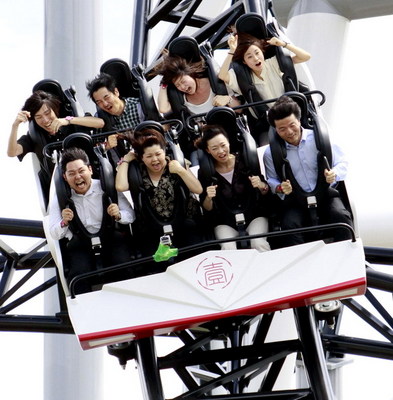Main reference: Story in Jinghua Daily
THE PAST FIVE YEARS have been a white-knuckle rollercoaster ride for A-share investors.
But an oft-cited market watcher says China shares are entering a half-decade of gradual upside, and investors will kick themselves in five years if they don’t get in now.
 President Yang Ling of China Value Investment Consulting Photo: jsgrandJust over five years ago, the benchmark Shanghai Composite Index – the chief tracker of PRC-listed A and B shares, hit a peak of 6,124 points in late 2007.
President Yang Ling of China Value Investment Consulting Photo: jsgrandJust over five years ago, the benchmark Shanghai Composite Index – the chief tracker of PRC-listed A and B shares, hit a peak of 6,124 points in late 2007.
Then came the tumultuous year 2008 which began with the big freeze in China’s south and central regions, the massive Sichuan temblor in May, the joy of the Beijing Summer Games and then the Wall Street-led global financial collapse.
Exactly a year after the 6,124-point plateau, the Shanghai Composite had lost 73% to fall to a low of 1,665 in November 2008.
Thanks in large part to a strong winter, the Index has climbed back to around 2,250 of late.
President Yang Ling of China Value Investment Consulting believes that history won’t repeat itself... at least 2013-2017 won’t mimic China’s previous half-decade market performance.
“The past five years have left many investors in China broken-hearted. But I think the next half decade will be even more painful for those investors who delay getting into the market for much longer,” Ms. Yang said.
 China investors have been on a five-year rollercoaster ride but the next few years will see an upturn, according to Yang Ling.
China investors have been on a five-year rollercoaster ride but the next few years will see an upturn, according to Yang Ling.
Photo: cnwestShe explained that from a historical perspective, average values for A-shares are still undervalued.
“Before all the shareholder rights measures are fully implemented and the equity markets have been further reformed, one could say that the country’s bourse is still a work in progress or even an ongoing experiment.
“But that doesn’t mean savvy investors should completely take a wait and see approach toward the domestic markets and hold off until the dust completely settles. By then it will be too late and prohibitively expensive to jump in.”
In fact, she says it is mainly sentiment factors rather than real-time market moving realities that have been depressing share values in Shanghai and Shenzhen these past few years.
But once more order and oversight returns to the markets, renewed confidence will follow in its wake and investors would do well to be firmly on board by then.
“Risk management and transparency issues, once enhanced and improved, will bring a more sustained bullish sentiment to the markets as systematic risk is further minimized.”
She added episodic yet extended bouts of sluggish turnover since the global financial meltdown in 2008 along with the periodic lure of tangible asset opportunities in sectors including real estate have also worked to keep share prices relatively depressed in Shanghai and Shenzhen.
“Since late 2012, it looks like a lot of the extra baggage and accumulated bad news has been nearly fully digested by the markets as the past three month Shanghai Composite Index performance seems to be saying.”
She added that for the next two to three years, Chinese A-shares should show a gradually rising trend, and that investment funds and listed securities firms would most likely outperform the broader market.
See also:
Four Hot China Share Themes Worth Watching
 President Yang Ling of China Value Investment Consulting Photo: jsgrandJust over five years ago, the benchmark Shanghai Composite Index – the chief tracker of PRC-listed A and B shares, hit a peak of 6,124 points in late 2007.
President Yang Ling of China Value Investment Consulting Photo: jsgrandJust over five years ago, the benchmark Shanghai Composite Index – the chief tracker of PRC-listed A and B shares, hit a peak of 6,124 points in late 2007. China investors have been on a five-year rollercoaster ride but the next few years will see an upturn, according to Yang Ling.
China investors have been on a five-year rollercoaster ride but the next few years will see an upturn, according to Yang Ling. NextInsight
a hub for serious investors
NextInsight
a hub for serious investors






